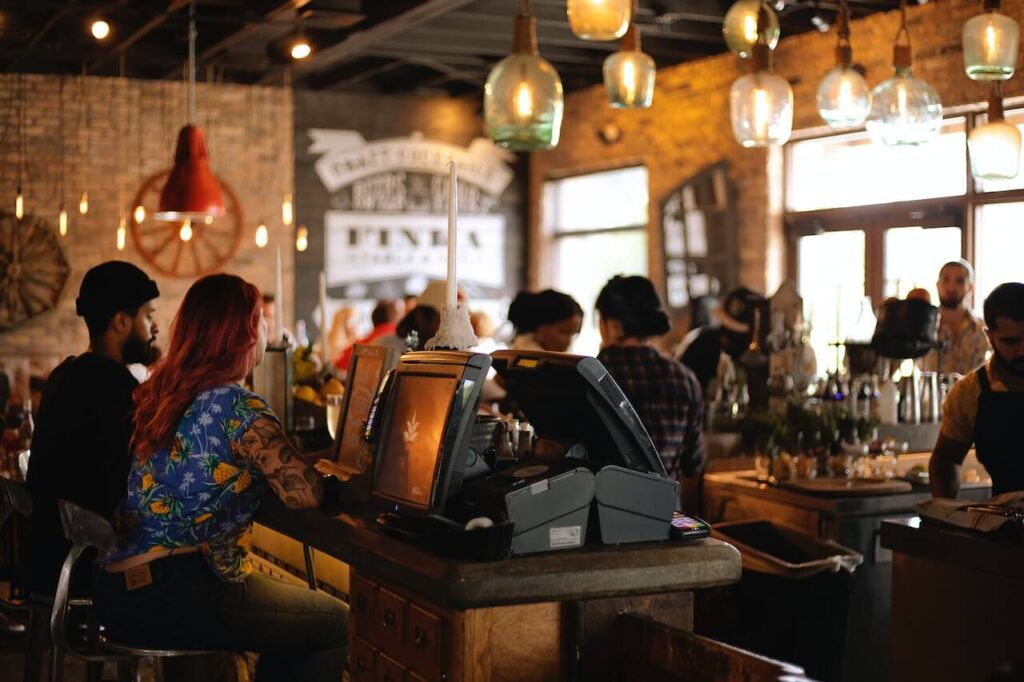As a restaurant owner, it is important to prioritise your restaurant risk management. The F&B industry is a dynamic and fast-paced environment where anything can happen, from equipment failure and human errors to natural disasters. By implementing a comprehensive risk management plan, you can be prepared for any situation that may arise.
In this article, we will discuss what restaurant risk management is and why you should prepare it, as well as the steps to prepare for risk management in the restaurant industry. Let’s find out below!
What is Restaurant Risk Management?

Restaurant risk management involves identifying, assessing, and prioritising potential risks that could affect the operations of a restaurant. These risks can include anything from workplace hazards, such as slips and falls, to foodborne illnesses and natural disasters. A restaurant risk management plan outlines strategies and procedures that help to prevent, mitigate, or manage the impact of these risks.
The goal of restaurant risk management is to protect the safety and well-being of your employees, customers, and assets, while minimising the financial impact of any unforeseen events. A risk management plan also helps to ensure compliance with regulatory requirements and prevent legal liabilities.
Why Do You Need a Risk Management Plan for Your Restaurant?
There are several reasons why having a risk management plan is essential for any restaurant. Here are some of them:
1. Protects the Health and Safety of Your Employees and Customers
The safety and well-being of your employees and customers should always be a top priority. A risk management plan can help to identify potential hazards and risks in your restaurant, such as slippery floors, improperly stored food, or faulty kitchen equipment.
By implementing measures to prevent accidents and injuries, such as regular cleaning and maintenance, staff training, and safety protocols, you can create a safer work environment for your employees and a more enjoyable dining experience for your customers. This can help protect your staff and customers’ health and safety, as well as reduce the risk of costly lawsuits and insurance claims.
2. Reduces the Financial Impact of Unforeseen Events
By anticipating and preparing for unforeseen events, you can minimise their impact on your business. For example, you may identify and assess risks related to equipment breakdown and create a plan for regular maintenance and repairs.
You could also develop a contingency plan for natural disasters, such as storing emergency supplies, developing a communication plan with staff and customers, and having alternative sources of power. With these measures in place, you can reduce the financial impact of unforeseen events and ensure that your business can continue operating.
3. Ensures Compliance with Regulatory Requirements
A risk management plan can help ensure your restaurant complies with all relevant laws and regulations. For instance, you may identify risks related to food safety and create a food safety plan that meets regulatory requirements.
You could also assess risks related to employment laws and develop policies and procedures to ensure compliance with those laws. By complying with regulations, you can avoid legal penalties, reduce the risk of lawsuits, and protect your business reputation.
4. Increases Operational Efficiency and Productivity
Identifying potential risks and mitigating them can help you create a safer and more efficient work environment. For instance, you may choose to invest in ergonomic kitchen equipment to reduce staff injuries, implement a food safety program to prevent contamination, or develop a crisis management plan to handle emergencies.
By improving workplace safety and reducing downtime, you can increase operational efficiency and productivity. This can help you save time and money while improving the quality of your products and services.
5. Builds Customer Trust and Loyalty
Customers expect a safe and enjoyable dining experience when they visit your restaurant. A risk management plan can help you create and maintain that experience. For instance, you may identify and address risks related to food quality and safety, such as using fresh ingredients and regularly inspecting your kitchen for cleanliness.
You could also assess risks related to customer service and train your staff to provide excellent service. By creating a safe and enjoyable dining experience, you can build customer trust and loyalty, improve your reputation, and increase revenue.
Risk Management Steps in the Restaurant Industry

Risk management is an ongoing process that involves identifying potential risks and hazards, assessing their likelihood and impact, developing strategies to mitigate or eliminate those risks, and continuously monitoring and updating the plan to ensure it remains effective. Here are some key steps to consider when developing a risk management plan for your restaurant:
1. Identify and Assess Risks
The first step in developing a risk management plan is to identify and assess potential risks and hazards in your restaurant. This could include risks related to food safety, employee safety, equipment failure, customer complaints, natural disasters, and more. Once you have identified these risks, you can assess their likelihood and impact and prioritise them based on their potential severity.
2. Develop Strategies to Mitigate or Eliminate Risks
Once you have identified and assessed potential risks, the next step is to develop strategies to mitigate or eliminate those risks. This could include implementing policies and procedures to ensure food safety, investing in equipment maintenance and repairs, developing emergency preparedness plans, and more. It is crucial to involve your staff in this process to ensure everyone understands their roles and responsibilities in managing risks.
3. Communicate the Plan to Your Staff
A risk management plan is only effective if your staff is aware of it and understands their roles and responsibilities in implementing it. You can accomplish this by clearly communicating the plan to them and providing them with the necessary resources and training to carry out their roles effectively. Additionally, you may want to assign a team or individual to oversee the implementation of the plan and ensure that it is updated as needed.
4. Regularly Monitor and Update the Plan
Risk management is an ongoing process, and it is essential to regularly monitor and update your plan to ensure it remains effective. This could involve conducting regular inspections of your restaurant to identify new risks, reviewing and updating policies and procedures as needed, and providing ongoing training and support to your staff. It is also important to track and analyse data related to incidents or accidents in your restaurant to identify trends and areas where improvements can be made.
5. Review and Evaluate the Plan Annually
It is important to review and evaluate your risk management plan on an annual basis to ensure that it remains effective and relevant. This could involve conducting a formal review of the plan with your staff and risk management team, assessing the effectiveness of strategies that have been implemented, and making adjustments as needed. By regularly reviewing and evaluating your plan, you can ensure that your restaurant is prepared for any situation that may arise.
Are you looking for a better way to manage your restaurant’s workforce and improve your risk management efforts? Look no further than StaffAny’s connected workforce. Our powerful tools allow you to manage your staff schedules, track attendance, and communicate important information to your team in real time.
With StaffAny, you can streamline your operations, prevent poor performances from staff, and stay on top of your risk management plan. Sign up today and start improving your restaurant’s operations with StaffAny’s connected workforce! Contact StaffAny now to learn more about how we can help your business!












